Gallery Network
7 Questions for Flavin Judd on the Donald Judd Stack He’d Never Seen Before and Experiencing His Father’s Work in Fresh Ways
Donald Judd's work is currently the subject of a solo exhibition at Gagosian, New York.
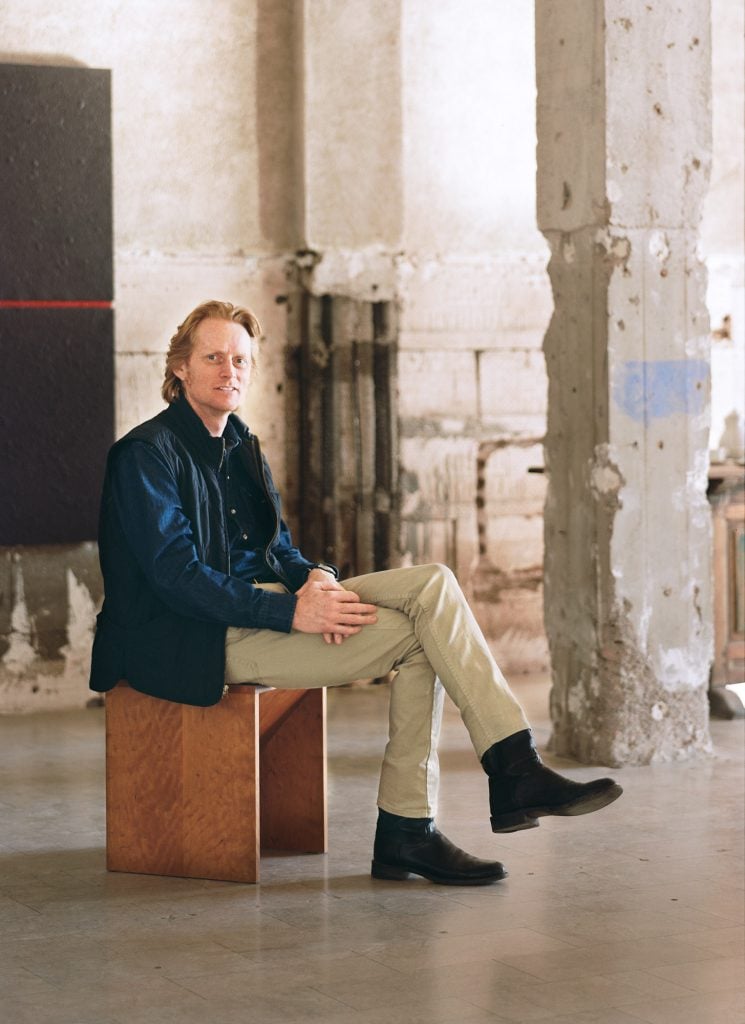
Donald Judd's work is currently the subject of a solo exhibition at Gagosian, New York.

Artnet Gallery Network

On view through July 14, 2023, Gagosian is presenting a solo exhibition of works by Donald Judd in their uptown Madison Avenue space. Comprising 15 works dating from between 1965 and 1991, the show encompasses a number of the materials Judd worked with—such as painted mill aluminum, plexiglass, and plywood. While each work’s individual logic and composition are largely self-referential, together these works have a remarkable effect on the gallery space.
Judd is widely considered one of the most influential artists working in the 20th century and this monographic exhibition of his works—ranging from plywood and aluminum floor pieces to galvanized iron wall pieces—offers a chance to gain further insight into the seminal artist’s vision. New juxtapositions and arrangements of works from different career periods and series create an opportunity to engage with and perceive the works in new—and sometimes surprising—ways.
A highlight of the show is a series of 20 woodcut prints, one of the largest print series Judd ever undertook. They were born out of an invitation by Inkong Gallery in Seoul to create prints utilizing local “hanji” paper, which is what the original proofs were printed on in partnership with master printer Robert Arber. The series was unfinished at the time of Judd’s passing but was recently completed in 2020 Arber in partnership with the Judd Foundation.
To mark the exhibition, we spoke with the Judd Foundation’s artistic director Flavin Judd, the artist’s son who has been at the fore of preserving and promoting Judd’s legacy, to learn more about what went into creating the exhibition.
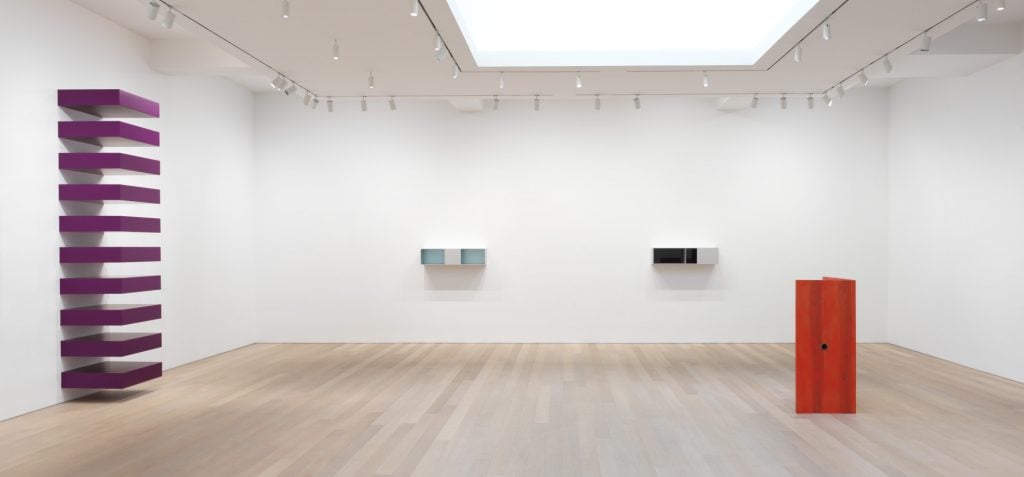
Installation view of “Donald Judd” (2023) at Gagosian, 980 Madison Avenue, New York. Photo: Rob McKeever. © Judd Foundation/Artists Rights Society (ARS), New York. Courtesy of Gagosian.
The present exhibition is the fourth solo of Judd’s with Gagosian and features a broader range of dated works—1965 through 1991—than previous shows at the gallery. Was there a specific direction or motivation behind the selection of works that are included?
The works are not selected based on a concept or theory. Each exhibition is about what works together in a given space and what might not have been seen recently together. The space informs the installation of the works.
As the artistic director of the Judd Foundation and of course the artist’s son, you have the best insight into what Judd’s creative vision. What are some things you take into consideration or think about in the process of helping mount an exhibition of his work?
It’s about the space and the work, there are no historical references or quotes. I am not interested in that kind of history mining, neither was Don. It’s really about experiencing and looking.
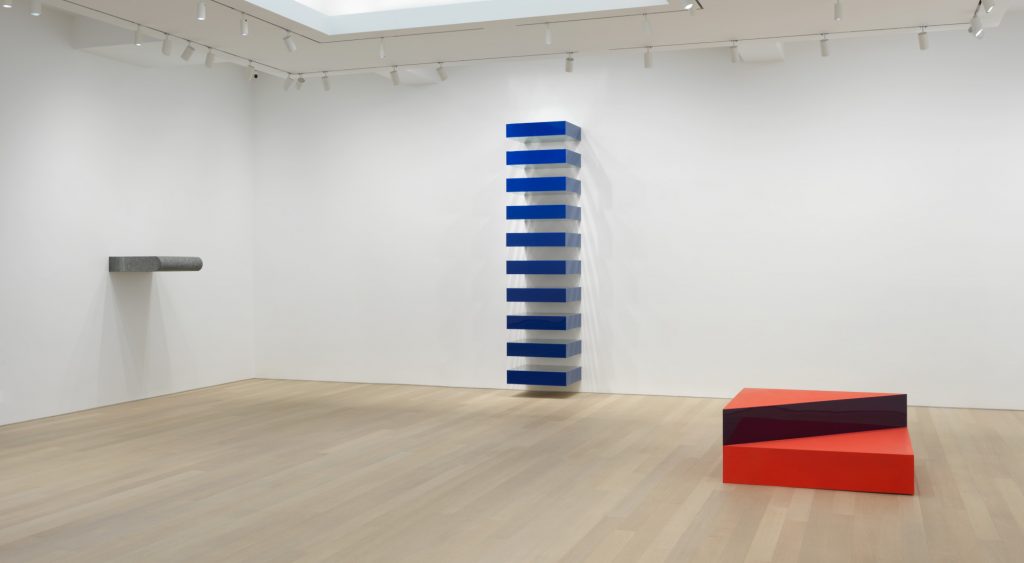
Installation view of “Donald Judd” (2023) at Gagosian, 980 Madison Avenue, New York. Photo: Rob McKeever. © Judd Foundation/Artists Rights Society (ARS), New York. Courtesy of Gagosian.
Viewers often associate Judd’s work with raw material—namely concrete or mill aluminum famously seen at the ChinatiFoundation. In this exhibition, however, there is an emphasis on color. Can you speak to Judd’s relationship with color in his practice?
His work, to him, was all about color. In the early metal fabricated works, he had rules that he stuck to (one color and one metal or two different materials of two colors), but that was limiting to him. He invented the painted aluminum works so he could play with color more. In those works, you see the way the colors work together and a broader spectrum of colors. He obviously felt that all materials had colors but that does not mean you want to just work with shades of gray all the time.
The color spectrum is wide and interesting, and Don was interested in things that exist—color exists. Whether they exist the same for each of us is another question. Maybe a viewer of the show can answer that. His prints also worked as color experiments. The main point though, it’s all color.
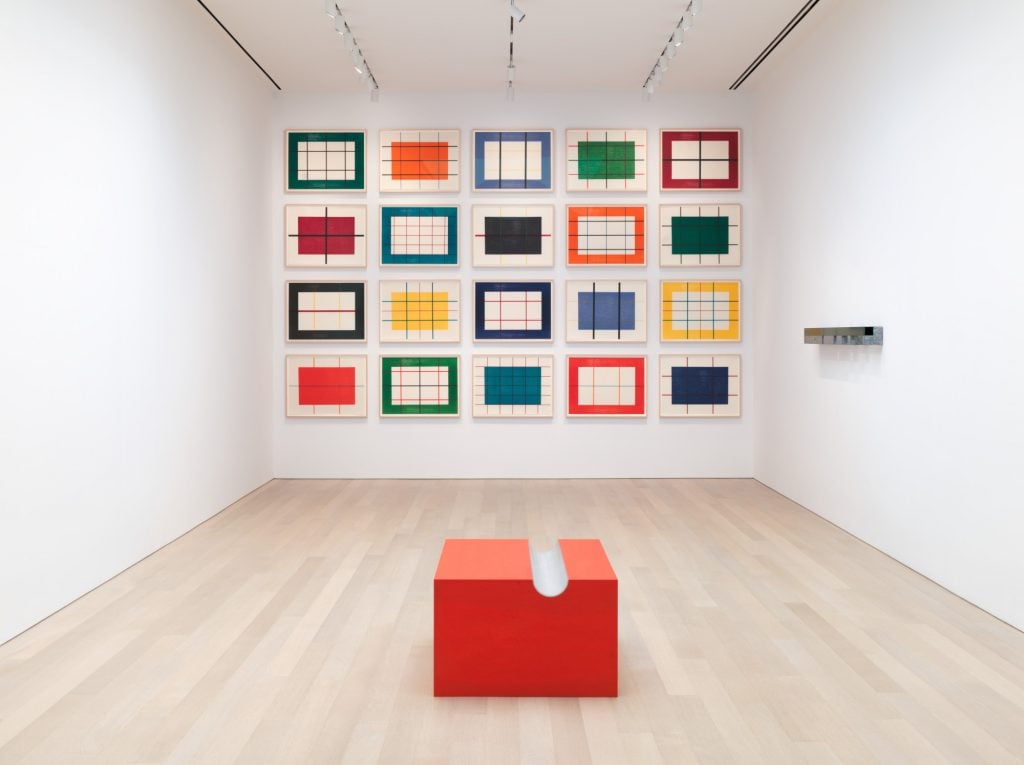
Installation view of “Donald Judd” (2023) at Gagosian, 980 Madison Avenue, New York. Photo: Rob McKeever. © Judd Foundation/Artists Rights Society (ARS), New York. Courtesy of Gagosian.
Can you talk about the twenty woodcuts that are on view, and the Judd Foundation’s involvement with their production?
For this set, Don had specified the use of a traditional Korean paper that has been made for more than a thousand years. Its fibers are really rough, and the paper has a mottled texture. Unfortunately, that means it’s terrible as a paper to make prints with. While we had the proofs and the original woodblocks, we had to have custom paper that combined properties of the original paper to complete the set. It took a while but so does everything we do.
Are there any key ideas or impressions you envision or hope visitors to the show will take away with them from this specific exhibition?
I just hope that they see the individual pieces and maybe feel how they work with each other. I want them to feel the works and not be told a theory of what is. What impressions come out of that is up to the visitor to and that’s important to leave that open.
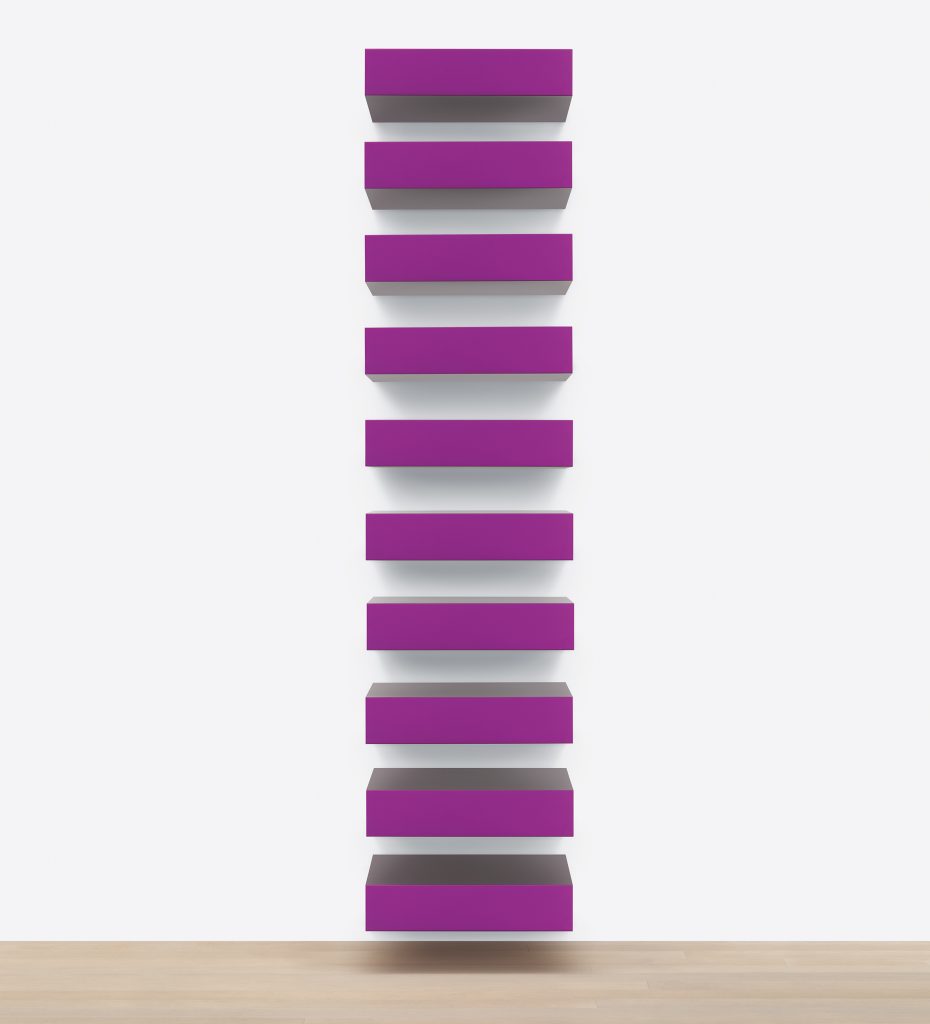
Donald Judd, untitled (1988). Photo: Rob McKeever. © Judd Foundation/Artists Rights Society (ARS), New York. Courtesy of Gagosian.
Do you have a favorite work in the show? Or are you perennially drawn to one format of work, such as floor pieces or wall pieces?
I’ve never seen the violet stack before so that was fabulous. Also, the prints at the end of the wall, I think that worked out very well.
“Donald Judd” is on view at Gagosian, 980 Madison Ave, New York, through July 14, 2023.